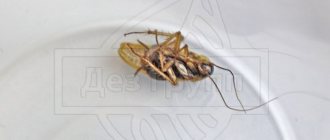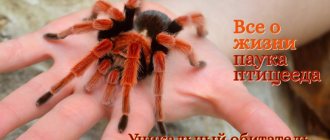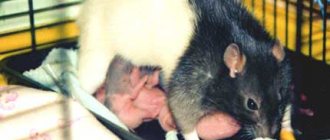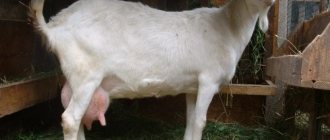Rats are intelligent, affectionate and playful companion animals. And if you've never owned a rat before, you might be wondering what their lifespan is.
Choosing a healthy pet rat and providing it with proper care and nutrition throughout its life can go a long way in extending its life.
What determines the lifespan of a rodent?
- Pedigree of the rat.
An inexperienced breeder may cross-breed sick animals and pass on undesirable traits to the baby rat, such as an inherited health condition, along with a certain color or coat pattern.
The optimal age for purchasing pet rats is about 6 weeks. Look for a healthy rat with shiny fur and lively eyes. Healthy rodents should also be active and inquisitive.
The rat you choose should not be sneezing, have a runny nose or red eyes. And you should make sure that the rat's droppings are dark and hard.
- Rat nutrition throughout life.
A rich diet for your pet rat is a guarantee of a long and happy life. Make sure she eats food specifically made for rats, and be aware of which human foods are safe to eat as rodent treats and which are toxic.
Origin and characteristics of the decorative rat
The ornamental rat is a descendant of the gray rat or rattus norvegicus. Black rats or "rattus rattus" are in no way connected with the origin of the domestic form of the animal. In the scientific literature they are called “rattus norvegicus forma domestica”: that is, in simple terms, a decorative rat is a domesticated wild bee.
Domestication or domestication does not mean the taming of a wild pasyuk, but a consistent change in a wild animal, during which it is kept in isolation from its wild counterparts for several generations and is accustomed to free interaction with humans.
In the process of artificial selection, rats adapt to life at home, changing their instincts and behavior. In particular, animals get rid of their fear of humans and new situations; their survival instincts, necessary in the wild, weaken. In addition, during the selection process, the appearance of the Pasyuk (not to mention the many artificially bred decorative varieties) also changed: the coat and color of the skin, the shape of the ears.
If ornamental animals are released into the wild, they will quickly die - from hunger, disease, the teeth and claws of a predator, or the hands of a person who mistakenly mistook them for an ordinary pest.
Wild gray pasyuki freely mate with ornamental rats, producing healthy, viable offspring. Rats born from such a “union” are called half-fathers. Some breeders purposefully raise ornamental rats by crossing them with wild rats.
Decorative and tamed pasyuki calmly coexist in the same cage, but black rats cannot be placed with them: they are weak and small, and decorative rats can kill them, obeying basic instincts.
How to extend the life of a pet?
Once you bring your new rat home, how do you ensure it has a long, healthy life? This can be done with the right diet. Here are some tips from nutrition experts:
- Plan your rat's diet. Like other pets, rats that are fed large portions of junk food can become obese. Even a small reduction in food intake can significantly increase the number of years your pet will live and improve its overall health.
- Feed your rodent food rich in antioxidants. As in humans, oxidative stress caused by free radicals in the body can cause disease and accelerate the aging process.
- Provide your rat with fresh vegetables such as carrots, broccoli and peas. Be sure to feed your pet food designed for rats and not other small rodents, as each animal has different nutritional needs.
- You can feed your rats fresh fruit from time to time. Rats also enjoy foods such as bread, nuts and boiled eggs.
However, save these foods for special occasions, as too many treats contribute to unhealthy weight gain. Additionally, a diet high in sugar and fat is unhealthy for a rat and can lead to health problems, just like in humans.
Care
Lifespan depends on care. It is important to consider many points and familiarize yourself with them before purchasing a pet:
- The pet's cage should be spacious and mesh. It should provide a place to sleep. Usually - a special house made of wood or other non-toxic material. Rodents are active animals. It is advisable that special obstacles are located in the home. You can make them yourself or purchase them at any nearby pet store. It’s better to take two rodents at once. One needs to devote more time so that he does not get bored. The home must have filler.
- The rodent's place of residence must always be kept clean. The drinking bowl should be washed daily and any leftover food should be thrown away. The cage should be thoroughly cleaned at least once a week. From time to time, your pet should be allowed to walk around the room. At the same time, it is important to ensure that no one steps on him and that there are no other animals nearby that could harm him.
- The rodent should be fed with special food. Such food is balanced and contains the necessary amount of vitamins and microelements. Proper nutrition is the key to longevity. 20% of the diet should be fresh vegetables. From time to time you can pamper your rat with boiled lean meat. It is also recommended to feed sprouted grains.
Periodically, you need to take your rodent to a veterinary clinic for examination. This will allow timely detection and prevention of some pathologies. It is strictly forbidden to place wood filler in the cage. It negatively affects the pet's respiratory system. This is due to the content of some essential oils in it.
Diseases of domestic rats that most often kill rodents
- Respiratory diseases.
This is the most common health problem in rats. Pay attention to discharge from the eyes and nose, as well as sneezing.
Most respiratory infections are bacterial and can be treated with antibiotics. Viral infections require good supportive care such as a good diet and proper cage conditions.
To prevent respiratory infections, the rat's cage should be kept clean and well ventilated.
- Cancer.
Fortunately, most tumors in pets are benign. Cancer is more common in female rats. It usually appears on the mammary glands from 18 months of age, as this is when female rats stop ovulating.
If you feel any lump under your pet's skin, contact your veterinarian. There are various treatment options, including surgery, to remove the tumor.
- Skin parasites.
Rats are most susceptible to skin mites. The prevalence of skin mites can range from a few to a complete infestation.
A few mites are common on most rats and are not a problem. However, if a pet is stressed or sick, it is vulnerable to developing an infestation. This can be treated with medication. But prevention is always better.
The rat's cage should be kept clean and disinfected frequently to prevent mites. Additionally, you should feed your pet a proper nutritious rat diet and try to prevent them from becoming stressed.
Varieties
The result of long-term selection work was the emergence of several subspecies of Dumbo rats, which differ in color and the presence of fur. Eared animals can be either shaggy or bald, and can also be black, white, gray and red. Depending on your taste preferences, you need to purchase the appropriate breed.
Rex
Representatives of the Rex breed have curly, dense hair that evenly covers the entire body, making the pet soft and plush. Newborn babies with protruding hair look comical and funny. Some individuals even have curly mustaches.
Sphinx
The Dumbo Sphynx breed is distinguished by its complete absence of hair. Small folds of skin can be seen on the soft, velvety body, which can be pink, white, blue or black. The length of the whiskers can be either large or small, and in some pets they are completely absent.
To preserve the genetic characteristics, experts do not recommend crossing the breed with other representatives of the Dumbo. To prevent aggression from rats with fur, it is necessary to place naked pets in a separate cage. This breed is chosen by people who are allergic to wool.
Siamese
Unique representatives of this subspecies have a soft cream coat color, against which the brown muzzle and paws look impressive.
Husky
At birth, Husky rats have a standard color range, against which white hairs may appear only after a few months.
Manx
Manx rats are tailless representatives of the species. This feature was caused by a gene mutation and caused negative reviews from specialists.
The absence of a tail has a negative effect on the skeleton and the life period of the animal, which does not exceed 12 months.
Blue mink
Blue mink is a unique subspecies that has gray wool with a blue tint. Amazing colors significantly increase the cost of baby rats on the market.
How do the life spans of different breeds of rats differ?
Regardless of whether we consider the lifespan of Dumbo or Albino rodents, it is almost always the same. Rats typically live between 2 and 3 years.
- Dumbo. The normal lifespan of a healthy dumbo rodent should be 2 to 3 years or more. The main cause of disease or shorter life span is inbreeding.
- Sphinx. Unfortunately, hairless rats have many more health problems than their furry counterparts. Hairless rats not only lack fur, but also the thymus gland. Iron necessary for the development of the immune system. Therefore, they have a shorter lifespan than regular pet rats, ranging from 6 to 12 months.
- Albino (white rat). Although hairless rats do not live as long, fur color and markings do not affect its overall lifespan. Rats of any color, including albinos, can live long enough without problems if they are bred by a conscientious breeder and properly cared for by the owner.
Description
The Dumbo rat is a small decorative animal that has disproportionately large, low-set ears.
Representatives of this breed differ from ordinary rats in the shape of their ears, which come in two types:
- in the form of a plate;
- in the form of a bud.
European buyers prefer animals with ears in the form of buds. The maximum size of a well-fed pet's body is 20 cm, and the weight of an adult can reach 400 g. Boys are much larger than girls. The animals have a round head with an elongated, pointed muzzle. Eyeballs are round. Some representatives of this breed have a thick, fleshy tail, and some have this part of the body completely absent.
Animals have a short life span, which does not exceed 5 years. The average life expectancy is 3 years.
How long do rodents live in the wild?
Rats in the wild are usually black or brown. But people began to catch white (albino) rats born from ordinary wild rats and keep them as pets. Many wild rats do not live to see their first birthday. Rats typically live between 6 and 11 months in the wild.
Rats in the wild face many more dangers than domesticated rats. They often become prey for many predators. Feral rats are also affected by food shortages.
Given these threats, it is not surprising that wild rats do not live very long.
Characteristics of panoramic perception
To compensate for myopia, rodents are given panoramic perception. The eyes of the animals are located on the sides of the muzzle. This arrangement provides expanded visual coverage of the territory.
It is worth noting that in animals the pictures that each eye sees do not coincide and are not combined into a single whole, as is the case in humans. Thanks to this overview, the animal quickly notices the appearance of an enemy.
The distance of the eyes from each other negatively affects binocular perception. If in humans it is 105%, then in rodents it is only 76%. This low figure is slightly compensated for by a visual feature called motion parallax. With its help, the rodent determines the distance to the object. When you move your head from one side to the other, objects also move. The movement of nearby objects is accelerated. This difference allows the animal to determine the distance.
How long do rats live at home?
Most often, pet rats stay with their owner for 2 to 3 years. This is 1.5–2.5 years more than a wild rat can live.
Because they live indoors, pet rodents are less vulnerable to both predators and food shortages. With a caring owner, pet rats can also receive veterinary care when signs of illness appear.
All these factors allow rodents to live for many years.
Reproduction
Rats reach sexual maturity at 6 months of age and can be reproduced if there are two of different sexes. These animals are very fertile, and female rats mate every 10 days.
Rats mate within 1-3 hours, and pregnancy lasts 21 days. It is important to provide a pregnant woman with plenty of fruits and vegetables that contain essential vitamins. Before giving birth, the female is busy building the nest, carrying various materials, from paper to rags.
On average, up to 8 liters are born, each weighing only 7 grams. After giving birth, the female and her young should be moved away from other individuals. Newborns are fed with mother's milk for about a month, after which young people try adult food.
Rat babies are born naked, their fur appears on the 10th day, and their eyes open 2 weeks after birth. Young rats become completely independent at one and a half months of age.











